Hello World,
I’ve been so busy with my work that I didn’t get the time to blog about Proxmox VE software. Even if I do not write a lot about Proxmox VE (PVE), I still try to get the latest news about the product. And guess what ! Yep, the team behind the Proxmox VE software solution has announced the release of the new version PVE 3.0 which is in the final one but defined as a release candidate.
The major change is the upgrade of the Debian version from 6.x to 7.0. Another interesting addition to this version is (finally) the possibility to create VM Templates and clone them. This was a most expected feature. By the way, I was about to write a post on this topic in the previous versions. We wanted to show how you could create a ready to use virtual machine and use backup/restore approach to clone this virtual machine.
Clean Installation or Upgrading
If you plan to test the PVE 3.0 version, you can decide to perform a clean installation or you can decide to upgrade your existing PVE host to Proxmox VE 3.0. If you plan to upgrade your existing infrastructure, you should make sure that you have a backup of your VM and CTs. If a problem would occur, you should be able to restore your VMs and CTs and start working with the Proxmox VE 3.0 version.
If you plan to upgrade you installation, you can already have a look at the instructions provided by the Proxmox VE team which can be found at http://pve.proxmox.com/wiki/Upgrade_from_2.3_to_3.0
We have performed a clean installation. There is no major changes in the installer interface and the process is quite straightforward if you have used the previous versions. We had the feeling that the installation time was faster/smoother than with previous versions. I would like to see an updated interface of the Installer (would be cool to have an updated installer interface). After the installation is completed, you can start login into your web interface. This interface has not changed dramatically. Again, If you are used to work with Proxmox VE, you will not be lost with this version.
A long awaited feature is included in this version. The VM Templates and cloning feature. ! Yes, you read it correctly. It’s there finally. Within the Web interface, you can perform basically 2 actions :
- Clone a virtual machine or
- Convert a virtual machine to a Template
As a preview, we have taken some screenshots of this new feature. As a first step, we had to create a virtual machine (we have called it Build). If you right click on the virtual machine, you will notice the two new options : clone or convert to template
Click on Picture for better resolution
A small wizard starts. In this wizard, you will have the option to specify the clone mode. If you have simply clone an existing virtual machine, you will have only one option : full clone.
Click on Picture for better resolution
If you want to use linked mode while cloning, you will need to create a VM template first. If you right-click on a virtual machine and select convert to template, you will see that the icon style will change.
Click on Picture for better resolution
If you now try to clone the virtual machine from the template, you will see that you will have the choice between linked clone and full clone in the Wizard.
Click on Picture for better resolution
And voila ! we have quickly demonstrated the new cloning functionalities..
Final Notes
I cannot promise you anything for the moment. I’m really really busy. But I hope that in a few weeks (euh Months) I will be able to post back information about Proxmox VE 3.0. I’m working on different projects where I’m learning more and more stuff. Nowadays, my focus is on Hyper-V 3.0 and VMWare. I’m also need to start working on Exchange 2013, SCCM 2012 and SQL 2012…..
As you can see, there is a lot going on
Till Next Time
See ya
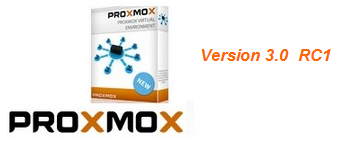
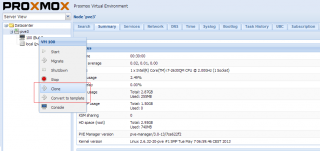
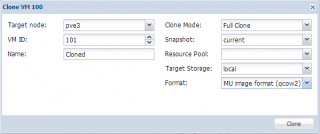
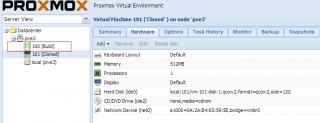
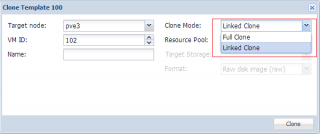
Proxmox VE 3.0 is out as of may 2013.
The ( first ) boot logs of OpenVZ containers are missing or are at least not obvious.